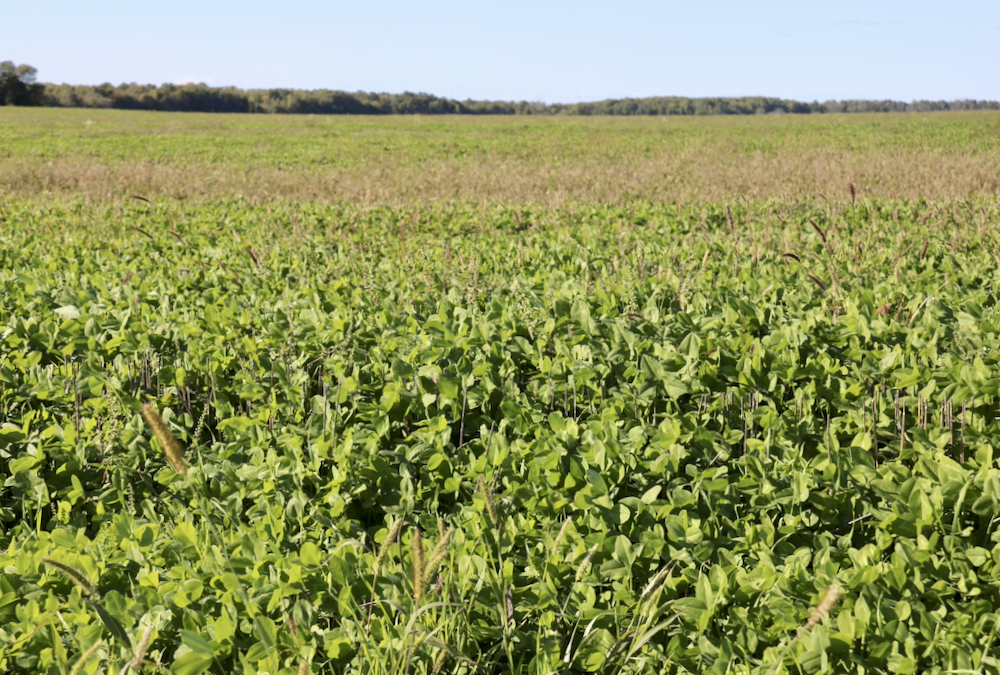Cover crop adoption decisions are complex

Crops cover more than 11 per cent of the earth’s land surface, a figure that is growing every year as grasslands are tilled and forests razed.
That’s one reason for greater interest in keeping that land covered throughout the year but increasing the volume of cover crops also means addressing the economics and sociological factors that drive farmer decision-making.
Why it matters: Cover crops help maintain and build soil health but the economics around them can be challenging.
Based on recent farmer surveys, the paths toward more cover crop use are based in economics, presence of supportive communities that involve other farmers and crop advisors, and evidence about value.
It comes down to managing risk, especially financial risk, which is critical for farmers who are fastidious about keeping control of the factors they can manage rather than the ones they can’t such as weather and global markets.
Farmers work to simplify their systems to help manage risks, surveys indicate.
“One factor that popped up again and again were cost factors, reduction in profits, the financial component,” said Richard Vyn, an associate professor of agricultural economics at the University of Guelph’s Ridgetown Campus. He completed a survey of farmers on factors that determined who did and did not adopt a list of six conservation practices.
They included the use of cover crops, crop rotations, reduced tillage or strip tillage, soil testing, the use of windbreaks or buffer strips and the use of organic amendments like manure or compost.
Taking on new farm practices on a large farm requires significant technical knowledge, says J. Arbuckle, a rural sociologist at the University of Iowa.
“It’s not a simple thing to look at a 2,000-acre grain operation and say, ‘let’s incorporate cover crops.’ There are different types of soil, equipment and climatic conditions,” he said. The systems are complex and require knowledge and management.
“That’s where the technical know-how is important on the risk management side of things.”
Arbuckle and other colleagues in the United States published a meta-analysis — a look at numerous studies — about how farmers adopt or don’t adopt soil conservation practices. He and his colleagues also conducted in-person interviews with farmers.
He says the most innovative work in soil and water conservation practice adoption is focused on systems thinking. Farmers who see their farm practices as interconnected and tied to larger systems are more likely to adopt practices that affect the larger community.
“We don’t know how to cultivate or teach that, but it’s something that we need to pay attention to,” Arbuckle said.
For some practices, the economics are proven. Rotating wheat with corn and soybeans provides a five to six per cent increase in corn yield and 10 to 14 per cent increase in soybean yield, according to University of Guelph research in 40-year rotation trials.
“The problem is making the decision for the current year,” says Vyn. “I can understand why they would be hesitant to include wheat in that year if they are taking a financial hit for that year.”
Yet many farmers, especially in the American Midwest, rotate only between corn and soybeans. In Ontario, leaving wheat out of the crop rotation simplifies the system because it requires less equipment, less work in the middle of summer and less risk.
In Western Canada, the system is similarly simple, with many producers rotating between a cereal crop such as wheat and the oilseed canola.
For farmers it’s a question of finding the right balance for their farm that makes them ecologically and economically sustainable.
How does doing the right thing fit into business competitiveness?
“Some of our reasons are altruistic,” says Exeter, Ont. farmer Mike Strang. “I like to do a bit of fishing. After a big rainfall event I see the creeks and the Morrison Dam fishing holes full of mud, I get a bit discouraged and think we can do better.”
The ability to get onto the land in spring and fall due to healthier soil, and the support provided by cover crops, is another positive for Strang.
“Compaction is also always on the forefront of our mind too. Especially when doing the corn, if you have a nice stand of annual ryegrass in there, when you go to pick the corn and it’s a little bit wet, we’ve had instances we’ve been chased out of the field with a half inch or three quarters of an inch of rain, but we’re back in the next day with no mud on those tires, right? That’s something, once you experience, you want to do it again.”
Both Vyn and Arbuckle found that local intelligence and expertise is critical to farmer adoption of new practices.
Bringing agronomists on side with conservation practices is an important step, says Arbuckle, as they are local experts trusted by farmers.
Local trials and demonstrations are highly valued, he adds.
They are “time consuming, difficult and messier than a typical soil scientist would like, but the payoff is potentially large.”
Vyn and Arbuckle found that farmers would welcome predictable, longer-term financial incentives to help reduce the risk of conservation practices, but they are not the most important factor.
“Just throwing money at this won’t have a big impact,” says Vyn. “It will have some, but there is more to it. Even if we take care of the cost side of it, there’s the time element, the additional machinery, the complexity of figuring out (how) to implement a different kind of practice for which they may not have a whole lot of knowledge.”
Source: Farmtario.com

